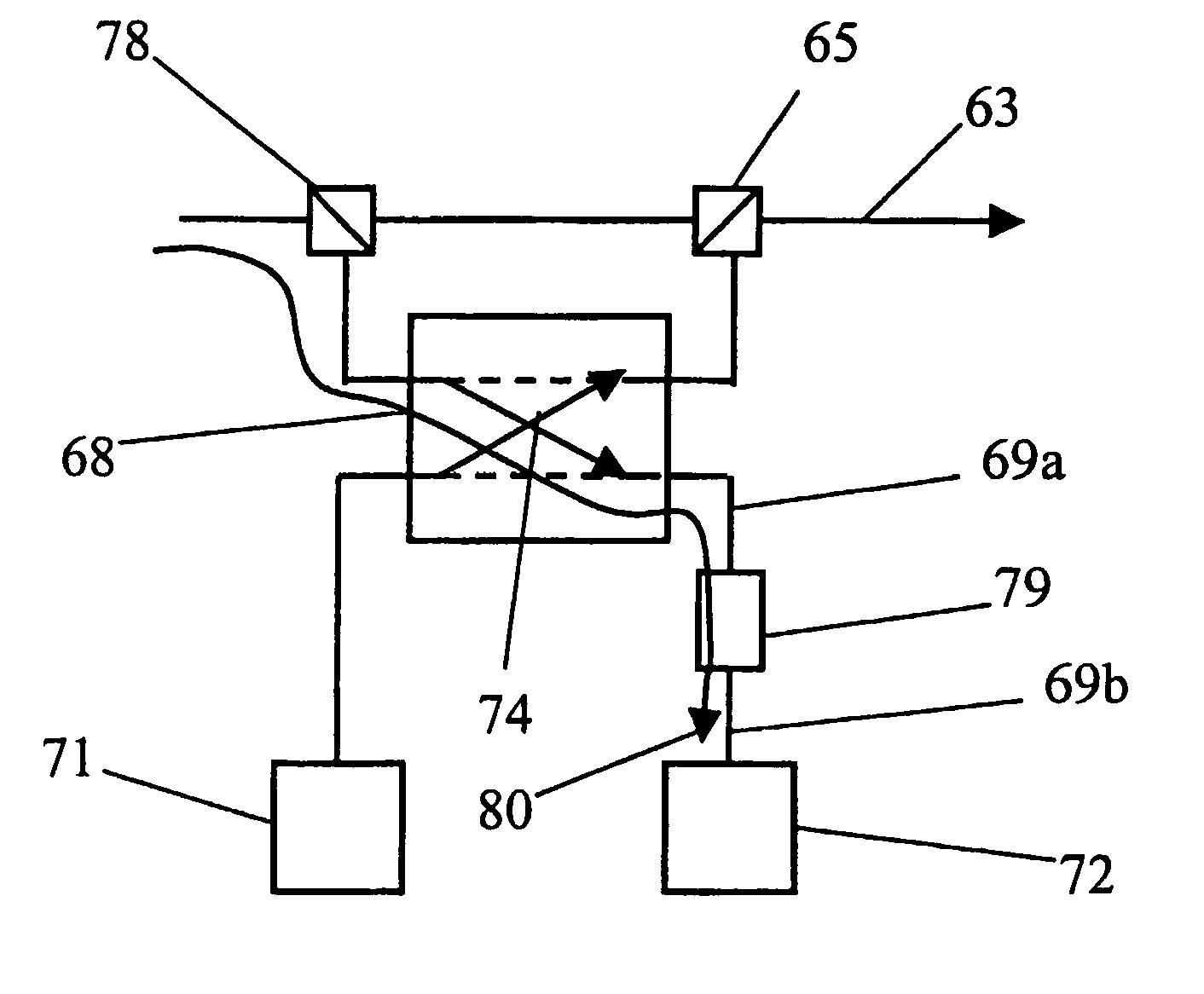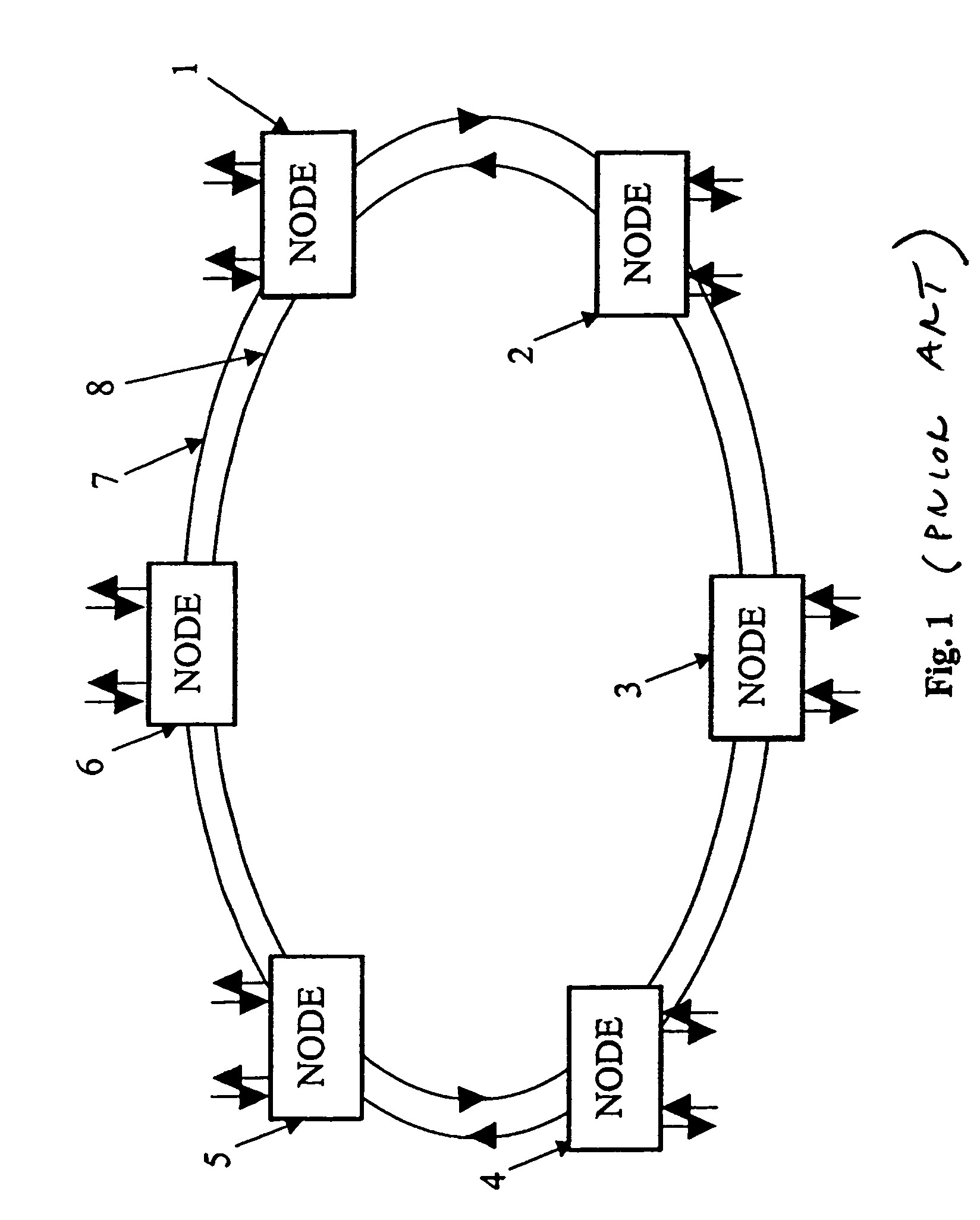Optical filtering by using an add-drop node
a node and optical filter technology, applied in the field of optical filtering by using an add-drop node, can solve the problems of dropping filters and a loss to the dropped signal, and achieve the effects of reducing the loss of relayed signals, low loss, and less stringent demands for crosstalk isolation
- Summary
- Abstract
- Description
- Claims
- Application Information
AI Technical Summary
Benefits of technology
Problems solved by technology
Method used
Image
Examples
Embodiment Construction
[0026]A schematic drawing of an embodiment of a WDM ring network is given in FIG. 1. Optical fibres interconnect six nodes 1, 2, 3, 4, 5, 6. Two optical fibre paths form two rings 7, 8. The nodes add and drop signals to and from these rings. The communication traffic in the two rings travels in opposite directions. The traffic pattern is meshed, i.e. each node has direct access to every other node in the ring via a dedicated wavelength channel. This is typical for a traffic pattern high up in a network hierarchy (core rings). Further down in the network hierarchy closer to the end user (access rings), the traffic pattern is typically hubbed, i.e. one central node, the hub, has a direct connection (a dedicated wavelength channel) to every other small node (called satellite node). Satellite nodes have no direct wavelength channels in between each other.
[0027]An example of a hubbed WDM ring is shown in FIG. 2. Only one fibre ring 9 is shown for clarity. Normally, there are two fibre ri...
PUM
 Login to View More
Login to View More Abstract
Description
Claims
Application Information
 Login to View More
Login to View More - R&D
- Intellectual Property
- Life Sciences
- Materials
- Tech Scout
- Unparalleled Data Quality
- Higher Quality Content
- 60% Fewer Hallucinations
Browse by: Latest US Patents, China's latest patents, Technical Efficacy Thesaurus, Application Domain, Technology Topic, Popular Technical Reports.
© 2025 PatSnap. All rights reserved.Legal|Privacy policy|Modern Slavery Act Transparency Statement|Sitemap|About US| Contact US: help@patsnap.com



